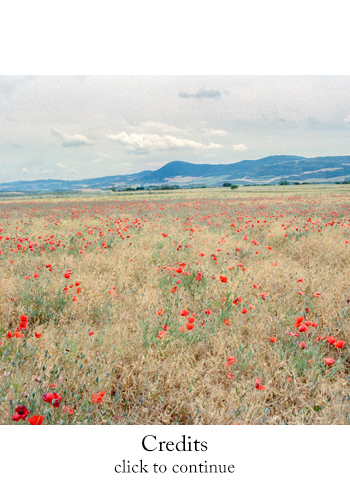
The goal of all pilgrims is to reach the cathedral in Santiago de Compestela. In the center of the square there is a conch shell etched into the cement that marks the final step. Each day a pilgrim's mass is held at noon in the Cathedral. Traditionally pilgrims will watch the swinging of the Botafumeiro, visit the apostle Saint James' remains, and hug his statue behind the altar.

Albergues are hostels that are open only to pilgrims. They are found inside churches, converted school buildings, people's guest houses, and as stand-alone business. The cost for a bed is typically 5 - 10 euros.


Pilgrim's Passport (Credencial)
The Camino can be walked in portions or all at once. Wherever you begin you receive a pilgrim’s passport. This small booklet is used to prove your status as a pilgrim and to track your progress. When you check in to an albergue they will stamp the passport with the location and date. Your passport can also be used to receive discounts like a Pilgrim's Menu. This Menu is offered by most bars and restaurants along the Camino and allows pilgrims to eat a three-course meal that includes water, bread, and unlimited wine for an average of 12 Euros.


As a certificate of completion every pilgrim receives a compostela upon arrival in Santiago. The compostela is issued with the pilgrim’s Latin name.

Over many generations the scallop shell has become the main symbol for the Camino de Santiago. The shell is commonly found on the shores of Galicia near Santiago de Compestela. Some say that monks who were traveling on the Camino for those who could not make the journey themselves would bring the shell back as proof that they had made it successfully. Modern pilgrims attach the shell to their backpacks at the beginning of their pilgrimage as a symbol of their intent to reach Santiago. The Cross of Saint James The cross of Saint James (seen here) and the seal of the Templar Knights are two other common symbols on the road to Santiago. Often you will see scallop shells adorned with one of these two signs.

To walk the Camino all you need to do is follow the yellow arrows. You will also find many other scallop shell way markers along the way, such as the cement one seen here. Pilgrims pick up stones along the way to symbolize the burdens they intend to leave behind and add them to the piles atop each one. If you are walking and a worry comes into your head you should just pick up a stone and tell yourself that once you set it down you will leave it behind.



